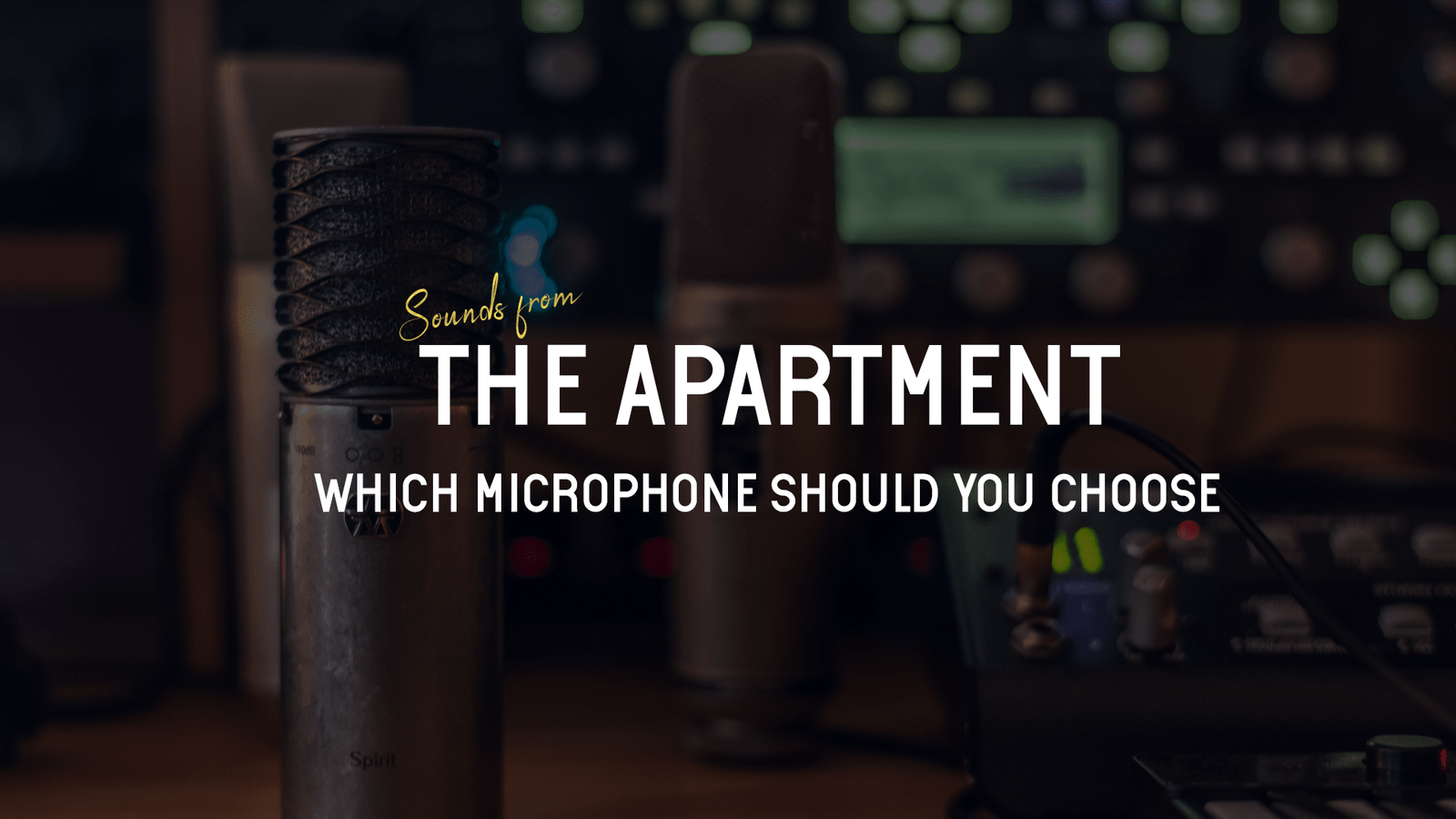As we discussed in previous week’s article, there are not good or bad microphones. There are… just microphones! But that makes even move difficult the choice to pick one. So how do we do it?
We weill get into microphone characteristics in depth in future articles, but in this week’s short article I would like to give you guidelines on how to pick up microphones for specific uses!
Let’s start with…
The Kick Drum microphone
The kick drum is one of the fundamental elements, almost, in any kind of music. In order to capture the rich sound and harmonics a kick microphone can produce we use microphones that have specific characteristics.
- Large diaphram
- Cardioid polar pattern
- Good sensitivity
- Frequency response that compliments the kick drum sound
These mics can also be used for capturing the sound from a bass amp
Drum Kit microphones (Shells)
The rest of the drum kit needs to be mic’ed up as well. But in this case we will need to choose different microphones that can still handle transient sounds well, but are not designed specifically for capturing sounds at the lower section of the spectrum.
- Cardioid polar pattern
- The highest possible MaxSPL handling
- Usually dynamic (as they are less sensitive)
- Frequency response that compliments the mid-high frequencies
Cymbal microphones
As you can imagine, the cymbal mics will also have to be a bit of a different choice as well. Cymbals are rich in harmonic content in high frequencies and all of their power comes from there.
- Cardioid polar pattern
- Small diaphram
- Usually condenser (as they are more crisp)
- Frequency response that compliments the high frequencies
Electric Guitar Cabinets microphones
Guitar cabinets a lot of the times will be mic’ed up with more than one mic. And that can also mean that a combination of dynamic, ribbon, condenser, small or large diapram microphones can be used to a capture the desirable sound.
- Cardioid polar pattern
- Figure of 8 polar pattern (if using a ribbon mic)
- High MaxSPL is desirable
- Small or Large diaphram
- Dynamic or Condenser
- Frequency response that compliments the mid-range frequencies
Acoustic Guitar or other Acoustic Instruments microphones
Unavoidably, you will have to record an acoustic guitar, or some other acoustic instruments at some point. In this case, frequency accuracy is essential! Acoustic instruments are designed so they can produce the best possible sound through their body and when recording that, we need to be able to reproduce it as much as possible!
- Cardioid polar pattern
- Small diaphram
- Condenser
- Frequency response has to be as flat as possible
Vocal Microphones
When it comes to vocals, a microphone choice is not easy. Every voice is different and ideally you would need the ideal microphone for each voice. But when it comes to budget, this is out of the question, so home studios will invest in one mic for this use, and if it is absolutely necessary, or there is available budget, a more suitable mic can always be rented.
- Cardioid polar pattern
- Small or Large diaphram
- Condenser or Dynamic
- Frequency response should compliment the midrange frequencies
- High detail
All Around Microphones
Finally we get to the last purpose microphone, which actually has, any purpose! An all around microphone would be used in any occasion we might need but it is not supposed to be designed for a specific use. We can record acoustic instruments, or vocals, or guitar cabinets, however usually, these are not intended for drum kits due to the high volume of transient sounds being produced, unless the microphones can handle that SPL.
- Multi-polar pattern
- Pad switch preferrably
- Low cut switch prefedrrably
- High MaxSPL is desirable
- Large diaphram
- Condenser
- Frequency response has to be as flat as possible
We will get into the microphone characteristics in more detail in the next coming articles! In the meantime I hope this article gave you a good basic understanding of how we pick the picrophone we need for our purpose!
Don’t forget you can find tips on how you can manage your home studio in a better way, here!
And of course , subscribe to our YouTube channel, Instagram and Facebook pages to get access to more of our content!

